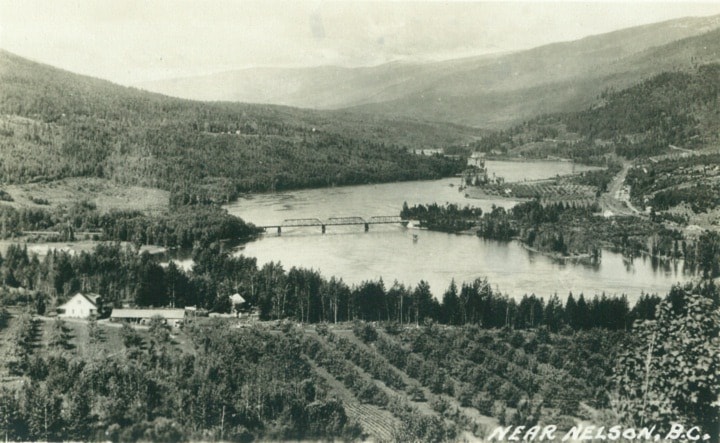Forty-fifth in a series on West Kootenay/Boundary place names
Davenport, also known as Davenport’s landing or crossing, was an obscure place just below the Taghum beach rapids on the south side of the Kootenay River.
It was first mentioned in the Nelson Miner’s debut issue of June 21, 1890 in a story about construction of the railway between Nelson and Robson: “The [steamer] Idaho runs down to the head of the rapids; there the supplies are transferred to bateau and taken to Davenport’s landing, where a portage is made crossing below the falls.”
A week later, Revelstoke’s Kootenay Star added: “A new town named Davenport has been started at the Falls 4½ miles below Nelson. There are numerous buildings erected and in course of construction … The Poorman mine and mill are working full-time with very satisfactory results to its enterprising owners, Davenport and Hussey of Spokane Falls.”
The eponymous Davenport was Abraham Lincoln (Linc) Davenport (1864-?), who managed the mill. His father, John Colver Davenport (1830-1919), was in turn the namesake of Davenport, Wash., and while it’s a bit hazy, John appears to have been an uncle to Louis Davenport, who built Spokane’s Davenport Hotel.
Only a few other newspaper references to this place appeared over the next few months, including in the Miner of July 26: “Smith & Woods have started a hotel at the Davenport crossing of the Kootenay. It will have the only billiard and ‘Dutch pool’ tables in the Kootenay Lake country.”
The same paper noted on September 20 that Columbia & Kootenay railway contractor Hugh F. Keefer was “making his headquarters at the place known as Davenport, 4 miles down the river from Nelson.”
On October 18: “The timber will be taken out of the river at Davenport’s landing and hauled by wagon to the bridge site.”
And on November 29: “When completed to the crossing, freight can easily be brought up to Nelson by way of the portage at Davenport’s landing ...”
Davenport was also listed in the 1891 Henderson’s BC directory as “A town on Kootenay River, West Kootenay district, 6 miles west of Nelson” with the sole resident being hotelier John Smith.
Though the name didn’t last much beyond that, the hotel did. Smith’s partner Robert Wood bought him out and ran it for the next 15 years. The log building was known as the Thistle Hotel, and in liquor license applications its location was variously given as Woodville, Woodsville, or Granite.
Wood died in his sleep at the hotel in 1906, apparently brought on by stress following a burglary attempt. It’s not clear how long the building stood after that.
The Granite Poorman mine that gave birth to Davenport became one of the greatest producers in the district, shipping over two tonnes of gold, silver, lead, copper, and zinc through 1954.
Previous installments in this series
Applegrove, Appleby, and Appledale revisited
Bakers, Birds, and Bosun Landing
Bannock City, Basin City, and Bear Lake City
Bealby Point (aka Florence Park) revisited
Boswell, Bosworth, Boulder Mill, and Broadwater
Brooklyn, Brouse, and Burnt Flat
Camborne, Cariboo City, and Carrolls Landing
Carmi, Cedar Point, Circle City, and Clark’s Camp
Carson, Carstens, and Cascade City
Christina City and Christian Valley
Cody and Champion Creek revisited
Champion Creek revisited, again
Columbia City, Columbia Gardens, and Columbia Park
